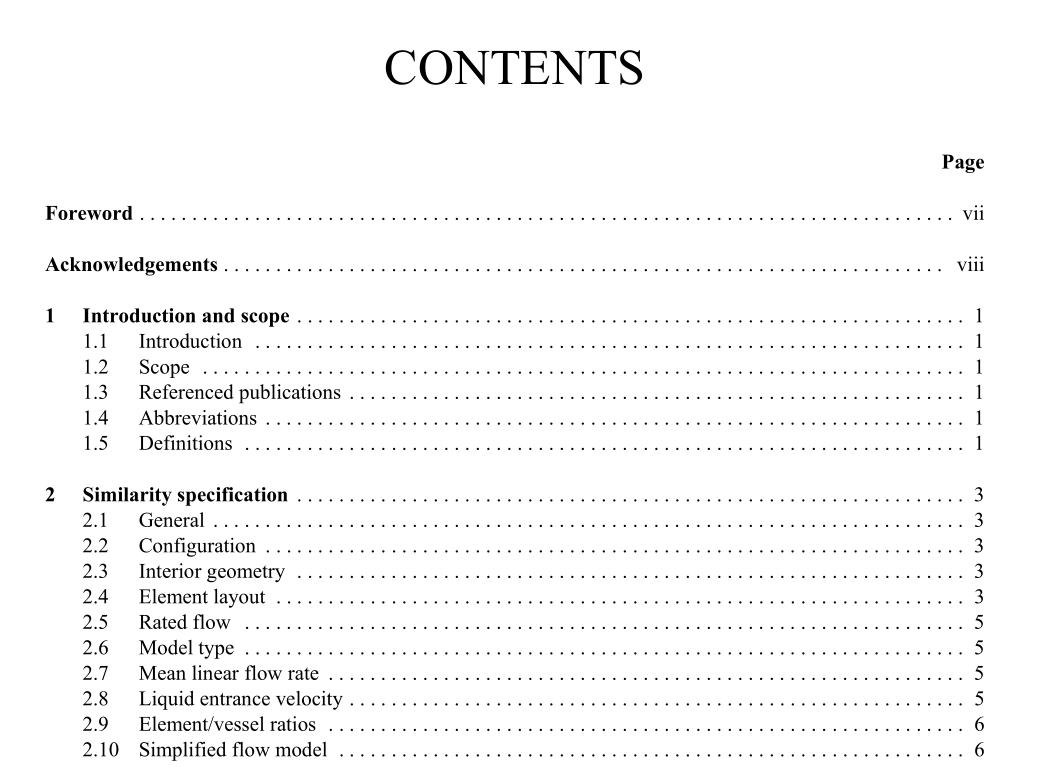API Spec 1582 pdf download

API Spec 1582 pdf download.SPECIFICATION FOR SIMILARITY FOR API/IP 1581 AVIATION JET FUEL FILTER/SEPARATORS
Testing to qualify the performance of filter/separator systems is specified in API/IP 1581. A critical performance test specified in API/IP 1581 is the single element test. This is a test of the intrinsic ability of filtration system components to remove dirt and water from jet fuel. A second critical test is the full-scale test. This is a test of the ability of systems of components, which meet single element test criteria, to remove dirt and water under the flow conditions present in commercial-scale systems. Because the scale and complexity of full-scale testing place significant demands on testing resources, it is desirable to minimize the number of full-scale tests required to qualify a range of vessels and filter/separators. Similarity is the methodology developed to minimize the number of full-scale tests. The concept is that full-scale testing is not needed if a candidate filtration system can be shown to be sufficiently similar to a system already qualified (by full-scale testing) to support the expectation that full-scale testing would meet API/IP 1581 requirements. Such a system is said to be “qualified to API/IP 1581 by similarity”.
2.1 GENERAL Any filter/separator system qualified in accordance with API/IP 1581 will allow qualification by similarity with systems of other sizes, provided the requirements of 2.2 – 2.9 are met. If these requirements are not entirely satisfied, then a candidate system may be qualified if the requirements of 2.10 are met. If the requirements of 2.2 – 2.9 or 2.10 are not met, then the system shall not qualify by similarity. The candidate system must be qualified to the requirements of API/IP 1581 by full-scale testing. 2.2 CONFIGURATION The configuration of the candidate and qualified systems shall be the same. Systems are defined as having the same configuration when the candidate and qualified systems have the same: (a) Orientation (vertical or horizontal). (b) General flow pattern (side-by-side or end- opposed). (c) Relative sump location and volume. Sump volumes need not scale with flow rate if a water defence system (API/IP 1581 4 th Edition p. 3.2.4.5) is present. (d) Relative positions for inlet and outlet connections. 2.3 INTERIOR GEOMETRY The interior geometry of the candidate system shall be essentially similar to that of the qualified system. The dimensions 2.3 (a) – (d) shall not be less in the candidate system than in the qualified system. (a) Minimum spacing between filter/coalescer elements. (b) Minimum spacing between separator elements. (c) Minimum spacing between filter/coalescer and separator elements. (d) Minimum distance between elements and vessel wall. 2.4 ELEMENT LAYOUT The element layout of the candidate system shall belong to the same class as the qualified system. The classes of element layout recognized by this specification are divided into two general flow patterns: side-by-side (Figures 1-3) and end-opposed (Figures 4-5).
3.1 GENERAL The Simplified Flow Model (SFM) is provided as a model for calculating flow parameters to establish that candidate and qualified systems are similar when conventional similarity criteria fail to establish similarity. The SFM is not required for determining similarity. It provides flexibility in qualifying by similarity systems that, otherwise, would require full- scale testing. The Simplified Flow Model (SFM) is a simple model for determining flow parameters between the coalescer and separator elements in a two-stage filter/separator system. The modelling assumptions and details are described in 3.2 – 3.3. An Excel spreadsheet that automates the steps in 3.3 is available from the API. 3.2 DESCRIPTION The SFM assumes that the fluid is a single phase and that the flow is evenly distributed over all elements; i.e. there are minimal flow mal-distributions due to element variation and dirt loading. It also assumes that the velocity between elements at any cross-section perpendicular to flow is uniform. 3.3 SFM METHOD The model functions by dividing the filter/separator system into zones (based on vessel cross-section). Each zone is comprised of the three closest elements or two closer elements and the wall. The length of a zone is the average length of the elements that comprise its borders. The flow through each zone is summed by assuming: (a) The flow into the filter/separator system is equal through each filter. (b) The flow exits each filter/coalescer element evenly (radially). (c) The flow into each separator is the same. (d) The radial distribution of flow into separators is evenly distributed. The summed flows are used to calculate linear flow velocities through each zone and residence time in each zone. Example calculations of the SFM are detailed in Annex A and B.









